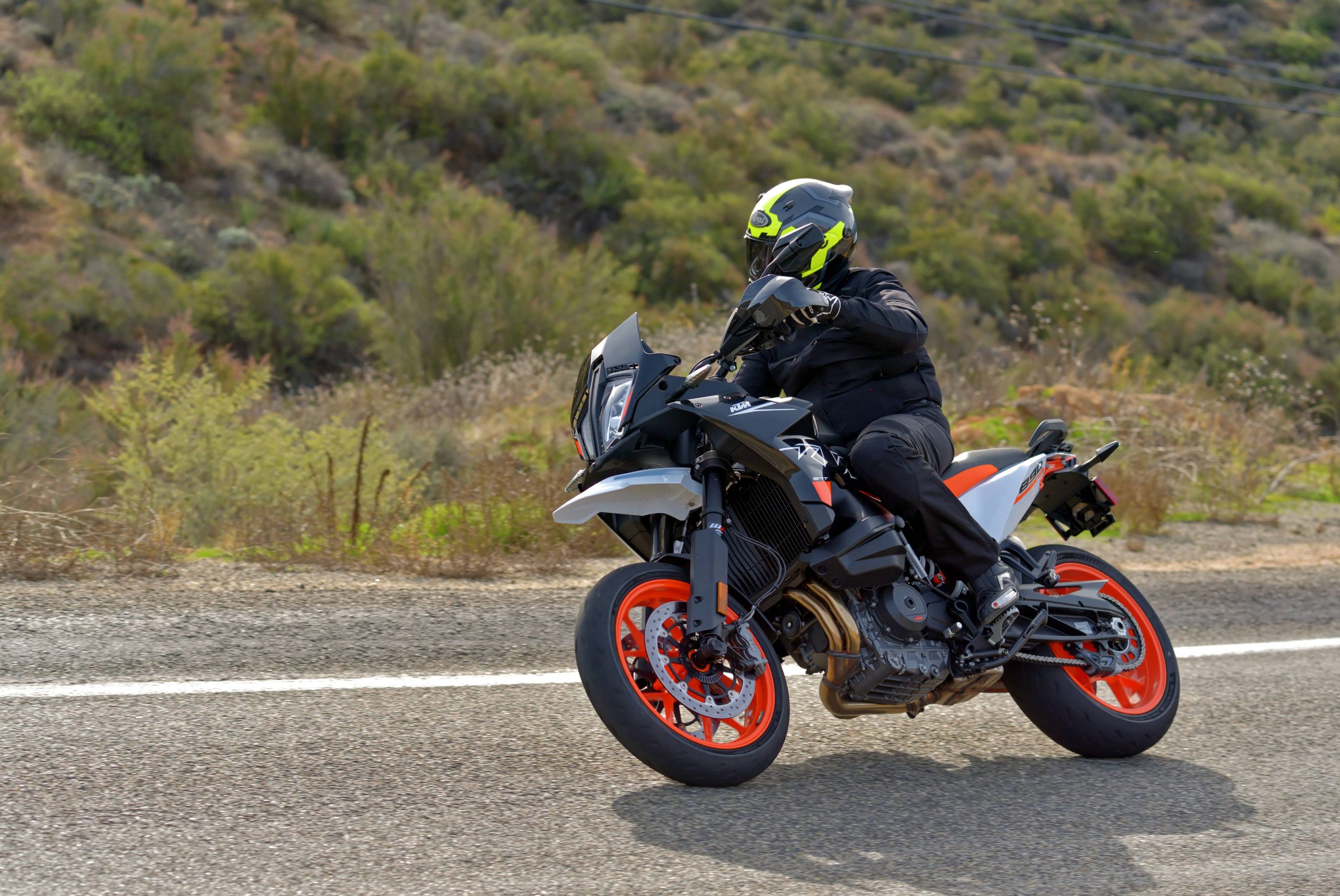
I’m sure every motorcycle enthusiast has spent more than a little time thinking about the “perfect motorcycle”. A bike that is not only a “jack of all trades”, but comes close to mastering them.
A few years ago, I was thinking about this very topic when I bought a KTM 790 Adventure S. I loved the motor, the upright riding position, the wind protection and the excellent feedback I got through the steel trellis frame. The bike handled so well with the stock 21″ front and 18″ rear wheels, I immediately planned to buy a 19/17 inch combination and get access to grippier, more road-worthy tires.
I still own the 790 Adventure, but I ran into some issues with the 19/17 wheel combo. I should have bought narrower wheels, supporting narrower tires, but the main problem was the ultra-low center of gravity created by the U-shaped gas tank design. I even took the time to raise the gas tank a few millimeters (that wasn’t easy).
It turns out that KTM was planning to introduce a bike that addressed all of my concerns, and then some. In Europe last year, the 890 SMT went on sale with the newer, more powerful 890 motor, slightly shorter suspension travel (by 20mm) and a smaller gas tank that carries its weight much higher than the adventure models. Oh … and it comes with 17″ wheels that allow the mounting of super-sticky sport rubber.

For 2024, KTM has brought the 890 SMT to the U.S. market, and MD has already tested the bike. Does it contain that perfect combination of attributes our editor was looking for when he modified his 790? Let’s get into our review.
Let’s go over the technical highlights. The same parallel-twin engine found in the 890 Adventure models makes its way to the SMT. The performance of this engine is almost universally praised. With a peak of 105 horsepower and a smooth torque curve that builds power very low in the rev range, the engine is flexible and fun. Note that the SMT does not get the higher horsepower version of this engine found in the Duke 890R, for instance, because KTM thought the torquier version of the motor better suited the purposes of the SMT.
Power is shifted through a six-speed gear box, and the front brake calipers are four-piston KTM-branded and radial mounted. They grip 320mm discs. A dual piston caliper squeezes a 260mm disc on the rear wheel.
The suspension includes front forks 43mm in diameter with 180mm of travel. The forks are fully adjustable for compression and rebound damping with simple, finger-operated clickers at the top of each fork tube. The shock features adjustable rebound damping and a hand-adjustable spring preload feature. The 17″ wheels are shod with sticky Michelin PowerGP tires.
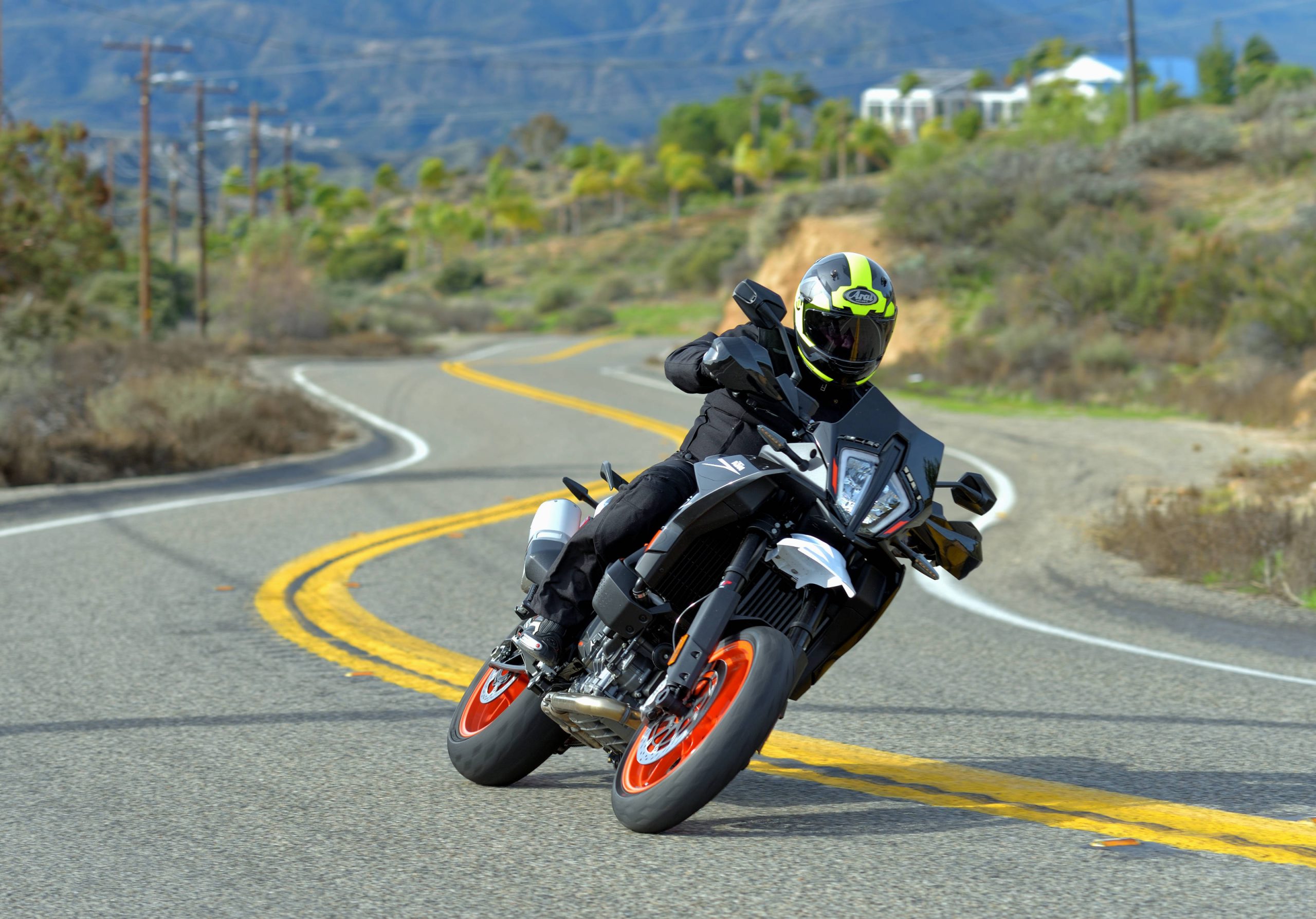
A bright, colorful 5″ TFT display on the dash works with finger controls near the left handgrip to scroll through and select all the various features. Among those features are three standard ride modes, including Rain, Street and Sport. The handlebar position is adjustable over a 30mm range.
Aided by an IMU, the bike features cornering ABS and Supermoto ABS (which disables ABS on the rear wheel). The IMU also allows the bike to feature lean-sensitive traction control.
During the first 1,500 kilometers (932 miles), new owners can demo other features, including a Track mode (permitting the rider to select different throttle sensitivities and adjust traction control through 10 levels), a quick shifter, cruise control and adjustable “motor slip regulation”. Unfortunately, the demo of these features expires and you will then have to pay your dealer to reactivate them. We believe the price is $549.99.

Marketed as a “Supermoto Tourer”, you might get on the new SMT and expect it to feel like a traditional supermoto … a dirt bike with 17″ wheels and tires. It doesn’t. This is a much more substantial machine, both in terms of weight and features. It turns out that this is largely a good thing.
As one might expect, the upright ergonomics are very roomy and comfortable. Reminiscent of an adventure bike. The reach to the bars (which can be adjusted) is easy and falls to a natural position.
Firing up the bike for the first time and riding away, the familiar torquey, characterful 889cc twin brings a smile to your face. Engine response to the throttle is excellent (we preferred Street mode, as Sport mode made the throttle a bit more touchy than we prefer).
As delivered, the suspension felt a bit too soft, and spongy, for our 210 pound (with gear) rider. We were told it was set on the “Comfort” settings. KTM provides a guide under the seat to set the suspension clickers all the way up to Sport settings.

We didn’t follow KTM’s under-seat recommendations, but went by feel. Adding three clicks of compression and rebound damping to the fork, as well as three clicks of rebound damping to the shock tightened things up nicely for aggressive sport riding. We also used the remote, hand-adjustable shock spring preload adjuster to raise the rear end a bit. We ended up with settings that worked very well while attacking familiar, twisty roads.
The bottom line is that the suspension on the new 890 SMT can be dialed in to accommodate everything from cushy touring to the pace required for a track day. Good stuff.
As we noted earlier, the seating position provides the upright comfort of an adventure bike, with plenty of leg room for an average size rider. The seat comfort, even after a couple of hours in the saddle, was a much welcome improvement over the editor’s 2019 KTM 790 Adventure.
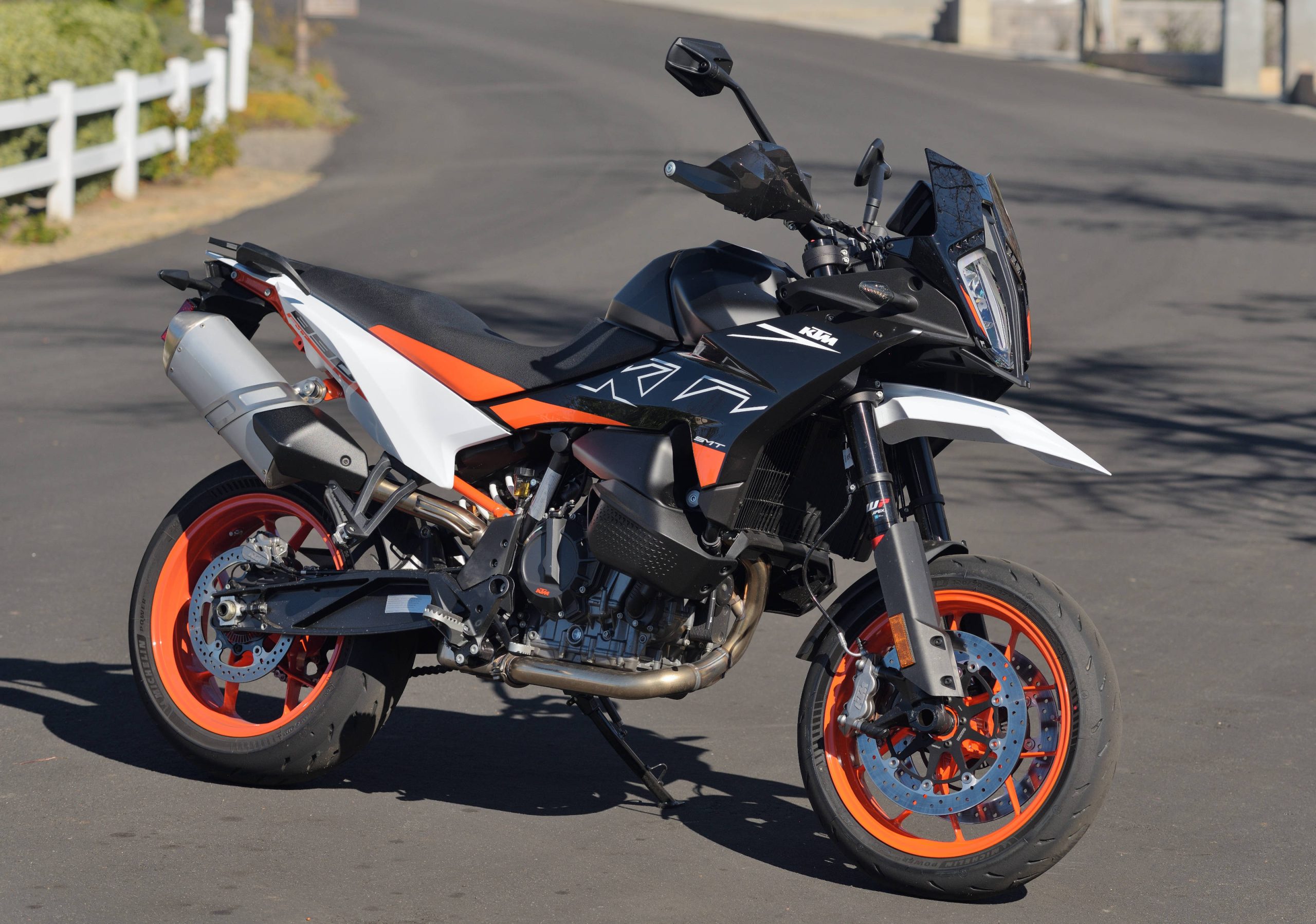
Handling is exemplary. It is not as nimble as a true supermoto, of course, but it still turns in with a moderate effort from the rider, and is very stable, both in a straight line and leaned over in sweeping corners.
The brakes appear to come straight from the latest 890 Adventure models, and they do a good job of stoping the relatively lightweight (at a claimed 427 pounds) machine with good feel. The transmission on our test bike, with the quickshifter in operation, changed gears with little effort. Some of the 890s we have tested have exhibited some knotchy shift action, but our SMT test bike was flawless in this regard.
The bike comes standard with very grippy tires, Michelin Power GP front and rear. These tires held tenaciously and provided good feedback to the rider. Combined with a balanced chassis, the new SMT can be ridden aggressively and pushed to change directions with very little drama.

In essence, this is a bike that is extremely fun to ride and is confidence inspiring. No, it won’t rip your arms out of their sockets with brutal acceleration, but the 890 twin provides plenty of performance on the street with decent peak power coupled with a very broad spread of torque that shoves you out of corners with authority. The flat plateau of torque frequently makes two gears equally effective on corner exits.
Things we didn’t like, or might improve if we owned an SMT? The throttle response in the Sport setting is a little too sharp for our tastes. Not terrible, and certainly useable on a race track, but for day-to-day riding the Street mode was perfect. If you have the options enabled (which we did on our test bike) you can go into Track mode and select Street as your throttle response setting. This is exactly how we rode the bike most of the time, but we also dialed down traction control on dry asphalt to level 3 or 4 (of 9) for a bit stronger acceleration.
Other than the throttle response issue in Sport mode, the 890 SMT is difficult to criticize. Of course, it doesn’t offer the wind protection of a full-blown touring bike, but that’s not what you would be looking for if you bought a bike like the SMT.
Frankly, in our opinion, even a fast track day rider could enjoy the SMT with just a couple of changes. Depending on their weight and speed, they might want stiffer springs in the fork and shock. Aggressive track riding would also benefit, in our opinion, from a radial front brake master cylinder (such as a Brembo unit). That’s about it.
So what you have in the 890 SMT is a fun, versatile motorcycle that can provide good comfort for commuting or a short tour, while being a blast to ride on the weekends on twisty roads.
How does the 890 SMT compare to Dirck’s modified 790 Adventure? Not much comparison, really. The handling and performance of the 890 SMT are a big step above the modified 790, and the 890 SMT even has a much more comfortable seat.
The 2024 KTM 890 SMT is currently available in U.S. dealerships at an MSRP of $13,949. For additional details, and a look at the many parts KTM offers to modify the 890 SMT, take a look at KTM’s website.
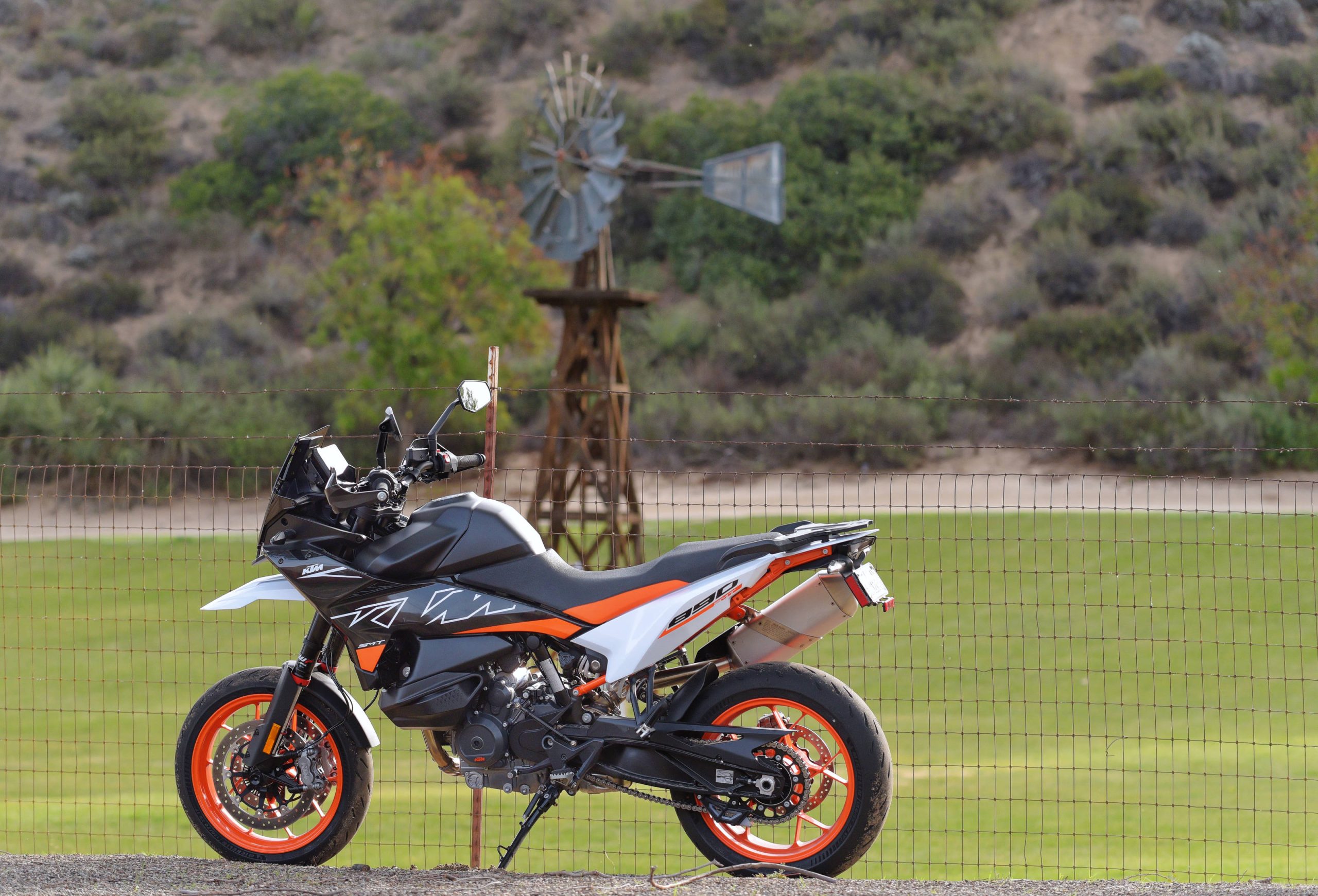


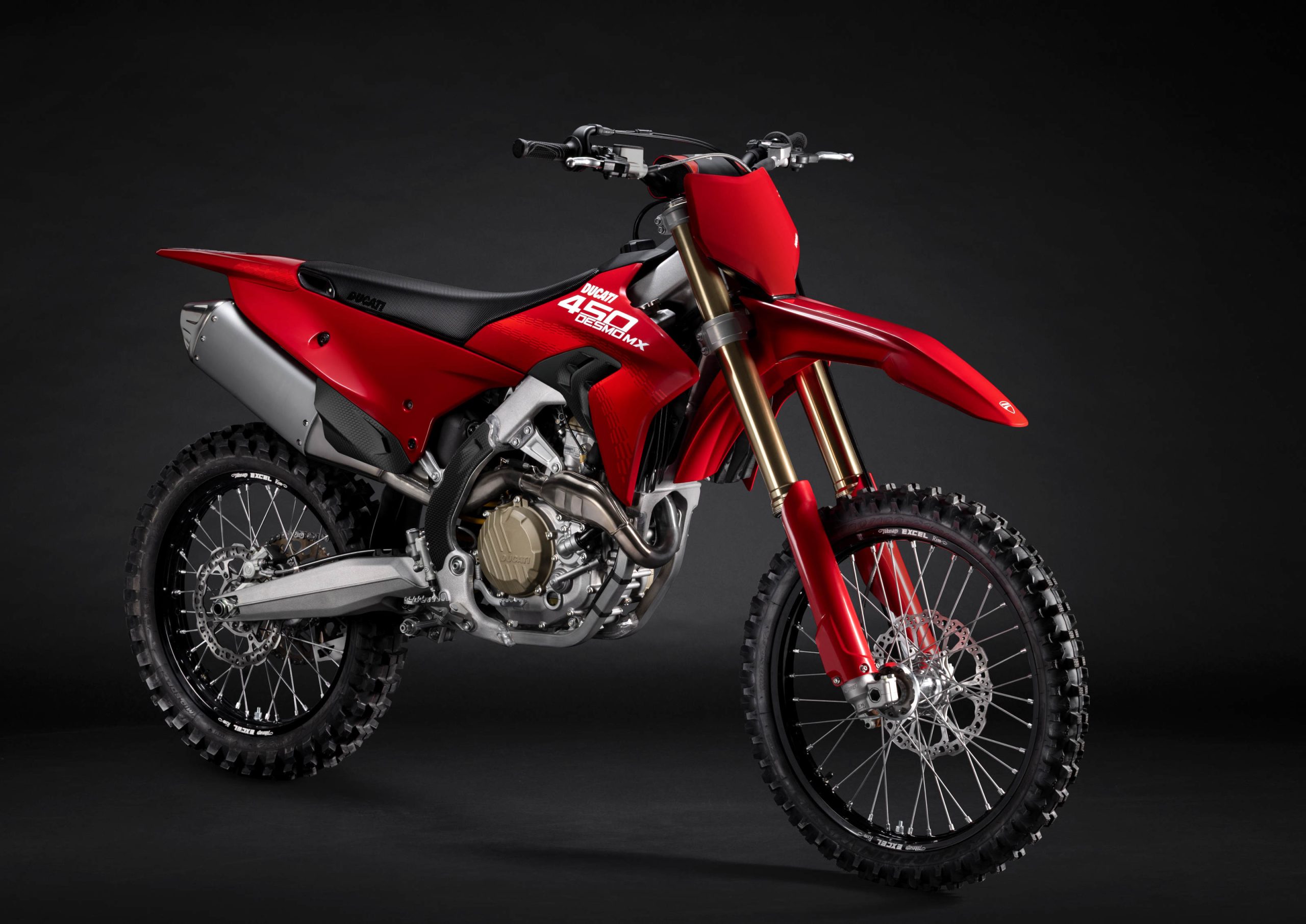



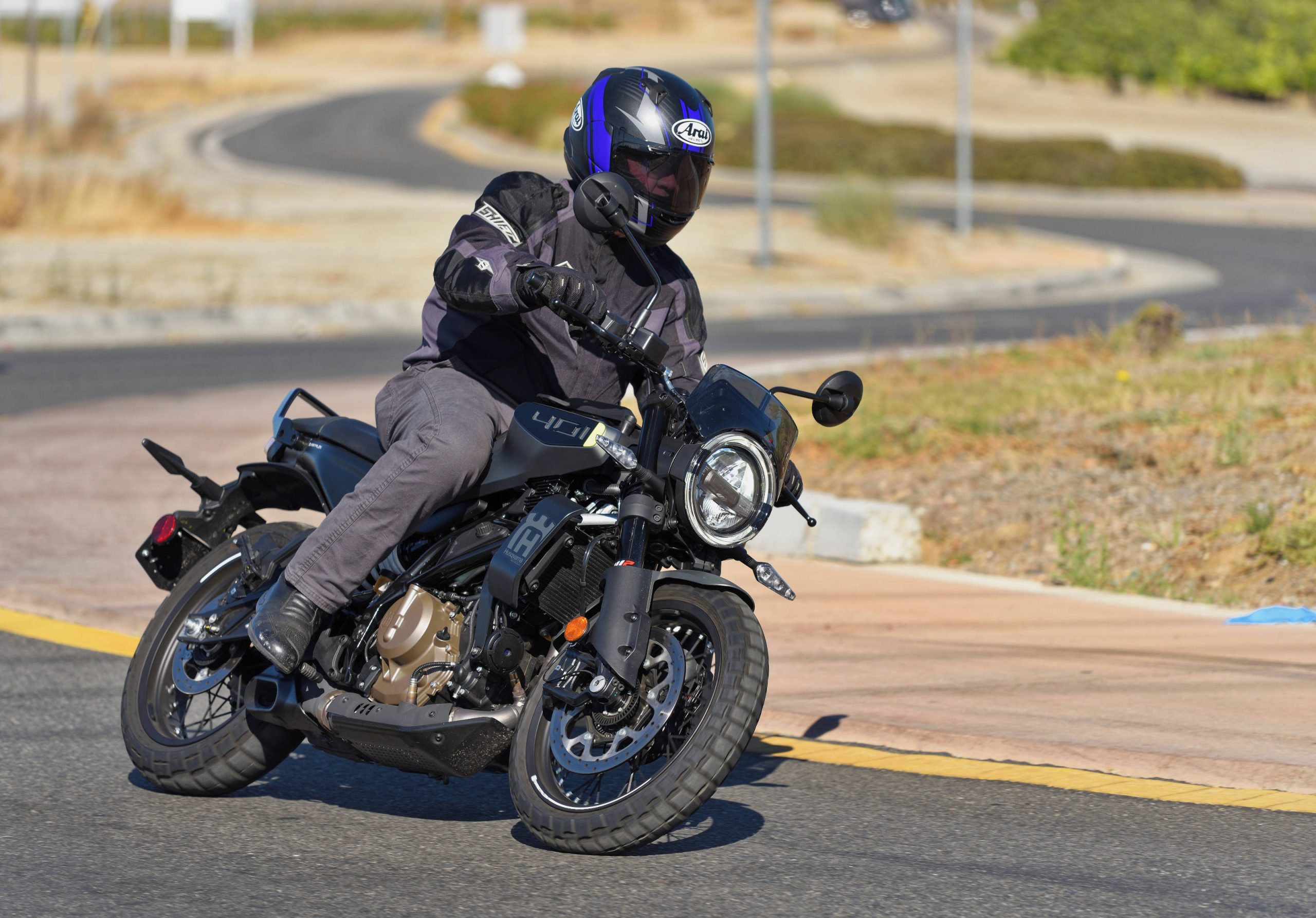
“I’d be more concerned about digital glitches, which is an ongoing concern with KTM.”???
About reliability, I had almost ZERO problems with my SMT and Super Duke GT. The SDGT had a recall for a fuel vent line that took almost 10 minutes to replace… that’s it.
As I stated in my earlier posts, I’ve owned many KTMs: 390 Duke, 790 Duke, 701 Husky, 950SM (driven over 40k miles), 990 SMT (driven near 15k), 1190 Adventure, 1290 SDR. Those along with the Guzzis I’ve had are/were some of the most reliable motorcycles I’ve ever owned. The Vtwins especially. This being said, the 790/890 cam lobe problem is real and so far KTM have only acknowledged it slightly by “sometimes” honoring claims from a respected dealer. https://www.advrider.com/f/threads/cam-lobe-wear.1551611/.
There will be an interesting comparison to be made as the “new” Duke 790 is made in China at CFMoto while the original 790 was made in Austria. I don’t know where the EU made bike’s engine components were manufactured but it will be interesting to see if the CFMotor engines are any better. I think I’ve read the EU engine had other fit issues like leaks at gaskets.
It’s ugly. It’s ugly and it’s uhhh … ugly.
Good motor.
Won’t get stolen because it’s…ugly.
Great review as usual Dirck.
Every KTM I read about gets a great review. And then I look at the styling and the colors and I’m not interested. At all.
To each his/her own. I’ll take function over form every day of the week … twice on Sunday. I’d be more concerned about digital glitches, which is an ongoing concern with KTM.
I bought a 990 SMT when it first came out and loved it and kept it until a few months ago. I bought a 1290 Super Duke GT when they first came out. It was an amazing bike. Faster (scary faster) and better handling with more features than any bike I had before it. Just one big problem. When you sell one be prepared to wait a long time for a buyer and keep lowering the price to giveaway territory. But hey, bikes are not investments. If you want the very best bike for the way you ride.. pay up. I replaced the KTM’s with a Multistrada V2S that checks my boxes even better. I’ll have to ride the new SMT. It sounds pretty good.
Did you have any reliability issues with the GT?
Interesting but pointless now that Ducati has the 698 Hyper. Almost 100 lbs lighter and handling that will make the KTM feel like a city bus. Less displacement, less money, less weight, and much better looking. Plus.all that Ducati ownership history.
Duc 698 – $ 14,495, SMT 890 – $ 13,945 Both out of my price range, with tax, set up, etc for a very fun toy.
2018 Duke 690, similar performance level and specs to the Ducati but $5-6000.
A post-2016 KTM 690 (with he balance shafts) really seems like the answer.
I don’t see how an SMT is in market competition with the 698. One is sport tourer with an emphasis on sport – a cross between the Duke and 890 Adventure whereas the other is a single cylinder super (Hyper!) motard. Generally someone looking to cover a lot of miles comfortably isn’t cross shopping with a single cylinder hooning toy.
Perhaps you are confusing the SMT with the 690 Duke – a direct competitor with the 698.
I fit a decent but cheap aftermarket windscreen and a 33L Shad top case, in conjunction with the PowerParts panniers and comfort seat and “R” rear sets. My 2018 690 Duke makes an excellent, comfortable, smooth, high speed touring bike.
Finaly a bike that I might actually open my wallet for!
Finaly a bike that I might actually open my wallet for!
Coming soon, the KTM 990 SMT, ADV, Duke, Super Duke, etc.
As Yogi Berra once said, “It’s deja vu all over again”.
It’s a nice bike. Just like before…
ORT
Great review and thanks. Some questions and I ask these as basically a KTM fanboy who has owned MANY of them. First, has KTM even addressed at all the many cam lobe issues with the 790/890 line of bikes? To my knowledge they have not and this significant cam lobe wear continues to occur even with the 890s. Second, a comment more than a question. So we’ve come this far now to develop the parallel twin which basically has the same/less(?) performance than the original SMT with the Vtwin engine which has few if any quality control issues? Of course, you get all the tech and economy on the 890 and so forth but take all that away and is this bike better than a basic SMT from 2011 even? The older bike has roughly the same/similar weight with more horsepower and similar torque. Older bike is also quicker if you look at 1/4 mile numbers (quarter mile numbers not so important but a good measure of the bike’s relative quickness).
Cam lobe wear? That’s sad.
Odd that 13 years and a parallel twin engine, generally lighter than a V-twin, made no weight difference. I expect better from KTM. But the industry has, with few exceptions, turned its back on weight management in their designs. So KTM saves a buck and follows suit.
I wouldn’t bet that a p-twin would be lighter than a v-twin. The p-twin will have a little more material making up its longer cam shafts and a lot more material in its crank shaft, plus the extra crank case width and bearing supports.
As ever the question remains, “How much will you pay for lighter weight?” because it’s becoming more and more as the years go on.
It’s more of a how much light weight are they willing to offer really. You can’t pay more for lighter weight because it is not offered.
A 690 SMC R weighs about 39 pounds more (12%) than a Kramer race bike with the same basic engine for about $4000 less.
But Kramer is a low volume manufacturer so you would expect to pay a bit more for a bike from them. If KTM made a Bike like a Kramer it would probably not cost nearly so much. But they don’t offer one do they?
It’s really all about how much work you are willing to do if you refuse to accept what’s on the market. I didn’t really pay a whole lot for my 650 supermoto and it also weighs 39 pounds less than an SMR. But I had to source a bunch of parts for, build and license the bike. I eventually bought another one for it’s really trick parts and sold the original. The effort was much higher than the cost. But what I ended up with has a very nice spec sheet.
“A 690 SMC R weighs about 39 pounds more (12%) than a Kramer race bike with the same basic engine for about $4000 less.”
There’s a 1st estimate, about $100/lb. Now consider that Kramer isn’t manufacturer, they are a builder that assembles track bikes from mostly existing components that someone else developed and manufactured. They also aren’t beholden to the regulations and certifications that manufacturers of street legal bikes are.
If KTM made a SMC R that weighted 40lb less for $4,000 more, almost nobody (including you..) would buy it. They know it, that’s why they don’t.
I’ve been hearing that argument for decades and I will never believe a word of it.
The street bike industry makes the bikes that they do because their customers continue to make that argument. They expect and will defend the lack of excellence in their market to their grave. So that’s what they get. Style over substance. Racers demand substance first. So they get lighter bikes and are still more rugged. You can bet that Kramer 890s don’t have soft cams for instance. KTM supplies them with engines that have upgraded internal parts. Kramer does make their own frames and KTM bought them for their limited edition RC 8C race bikes, which are basically Kramer bikes.
Sit back and watch Triumph and Ducati struggle to sell motocross bikes. They are about to find out just how tough a customer dirt bikers are. Ask BMW. They tried and failed miserably.
But it isn’t an argument, it’s an explanation. You’re citing dirt bikes and race bikes that aren’t street bikes then slagging the entire industry for not building for you something that no motorcycle company has ever managed to make despite the universally agreed upon benefit of light weight.
As for your Kramer claims, mostly speculation. A frame builder is not a manufacturer (see Spondon, Harris..). I bet they’re mechanically stock KTM engines in a higher state (read; not street legal..) of tune.
What you claim to want is *literally impossible* to make at anything approaching a reasonable cost and you won’t buy the products that come closest (Duke 690, new Ducati single).
I think Triumph and Ducati will do ok with dirtbikes for the same reason Sherco, Beta and other European brands do. Dirt bikes are popular in Europe.
Actually Dave. The twins in Kramer bikes are upgraded by KTM at the factory for the RC 8C to handle the rigours of racing. All the Kramer twins have the RC 8C engine. They are expensive bikes. But they are, well, ready to race. And at least 120 pounds lighter than the above bike. My wife holding a case of beer weighs less than 120 pounds.
I did a quick search for aftermarket cams for 890 KTMs. They are not super easy to find. I guess if I were to go to the trouble of tearing into my 890 to inspect the cams I would go whole hog and simply replace it with a quality part. Lord knows I’ve removed the cams a zillion times on those ridiculous four stroke dirt bikes to change the under bucket shims. It’s not rocket sciance. It’s just super inconvenient. The head on the 890 might be for a twin. But it is a very similar construct.
Man am I ever glad to have gotten rid of all my off road four strokes. What a nightmare.
Someone remind me why we are comparing the weights of a race prepped bike with a factory sport-touring bike? I fail to see the parallel. Is there a discussion of race prepping an 890SMT that I missed?
Gary, Mick has continually slagged the motorcycle industry for not producing impossibly light, powerful street bikes for the same prices as current premium bikes. He uses stripped, prepped racing bikes and converted dirt bikes without DOT legal lighting/emissions equipment as evidence of his claims. I for some reason cannot resist offering him the occasional reality check.
I’ve been waiting for your review on this bike. I’ve narrowed down my shopping to this bike and the MG V100S. If I go with the SMT I would picking up some parts from the KTM parts shop including the front fender (the dirtbike fender looks odd on a bike that is a dedicated road machine), factory saddle bags and possibly a different windscreen. I would also pay the ransom for the additional features…but in the end I believe that I will have a great do-it-all street machine.
If looks are a consideration, the MG wins by a landslide. I can’t get into the praying mantis look, which is why I ride the old 1190 Adventure.
This sounds like a perfect all around bike, however the 17 inch front cuts into that description, favoring sport handling. I would really want a 19 inch front for the advantage in everyday conditions. Getting used to the looks, except for the graphics. Would hope they could be removed with a little heat. Muffler is a little huge too.
I’m on the other side of that track. I see 17 inch wheels on a street bike as a strength. But then I use bikes like this for two up use. You can really shred something like this with a fairly lightweight passenger. A 19 front would only slow you down and limit your tire choices. It’s one of the reasons why the current Multistradas no longer exist in my universe.
Having never ridden anything other than 17″ wheels, what advantages does a 19″ front wheel provide on the road? Better ride quality?
Two ways of looking at 17 vs 19. Overall though – better ride quality.
17s are quicker turning, MUCH better for finding sport rubber, physically stronger, just right on a smooth surface, and better slip angle feedback.
19s Have more straight line patch surface, better stability on rough surfaces including rippled curves, Semi pot hole rolling compliance, especially with wire spokes, however could be weaker than 17s.
Most importantly – Front tire should always look taller than rear.
OK, mabe not on a race/sport motorcycle.
It’s sad that street trackers never caught on. If so there would be a host of cool DOT dirt track rubber on the market now.
Dirt track tires are 19s, wide and have a nice profile. A dirt track bike can do excellent lap times on a road race course. But whatever. The street bike industry drives me crazy(er).
It took a while. But here we are. KTM made an original Multistrada kinda thing. It’s my kind of off the rack two up bike. But I don’t see anything compelling enough to get me off my trusted steeds.
Whatever. It’ll sell. I guess the Yamaha Tracer 900 is the thing that they will compare it to now. The current Multistradas took up residence in outer space and are no longer relevant in this segment.